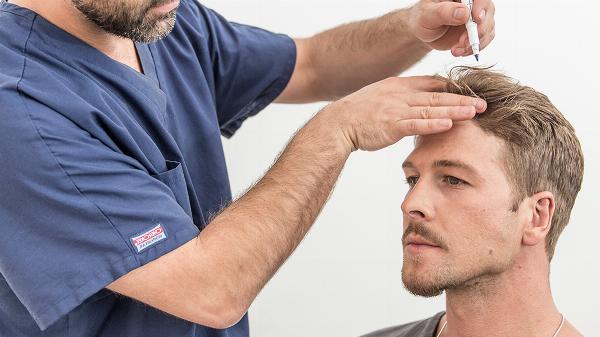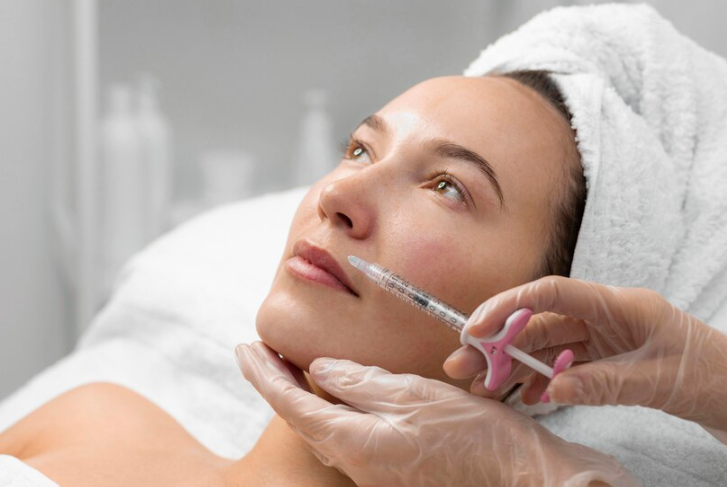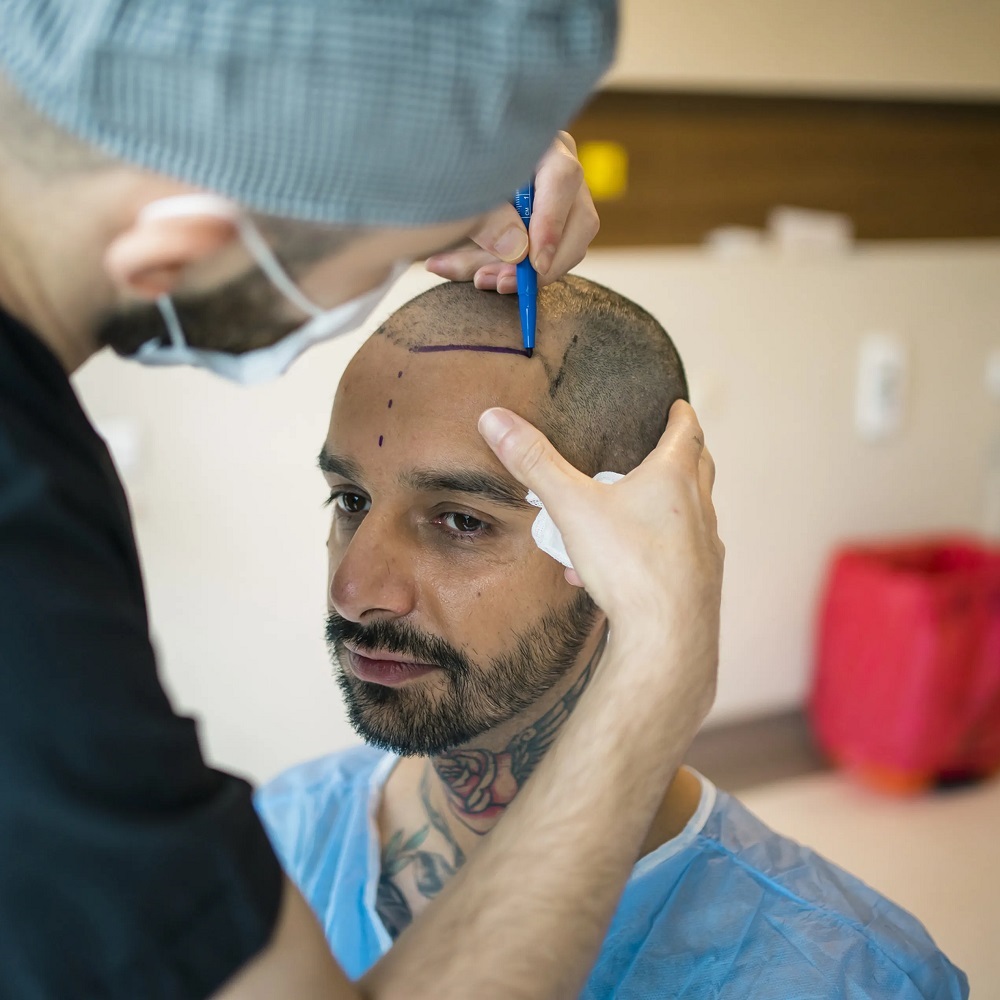PRP Hair Treatment: Regrow Thicker Hair

Strong 8k brings an ultra-HD IPTV experience to your living room and your pocket.
In the quest for fuller, healthier hair, Platelet-Rich Plasma (PRP) hair treatment has emerged as a compelling solution. This innovative approach harnesses the body’s own healing powers to stimulate hair growth and restore vitality to thinning hair. PRP hair treatment in Dubai is gaining popularity due to its non-surgical nature and impressive results. This article delves into how PRP works to regrow thicker hair, the underlying science, and what makes it an appealing option for those struggling with hair loss.
✍️ If you’ve heard about stem-cell therapy for hair growth, read our coverage of future hair treatments that explore experimental solutions like robotics, AI analysis, and regenerative medicine.
Understanding PRP Hair Treatment:
PRP hair treatment involves the use of a concentration of platelets derived from the patient’s own blood. The process begins with a blood draw, which is then processed in a centrifuge to isolate the platelet-rich plasma. This plasma, rich in growth factors, is injected into the scalp where hair thinning or loss is occurring.
The growth factors in PRP are crucial for stimulating the hair follicles. By concentrating these factors, PRP treatment aims to rejuvenate damaged follicles, encourage dormant follicles to become active, and ultimately lead to the regrowth of thicker hair. The treatment is particularly effective for individuals in the early stages of hair thinning or those with mild to moderate hair loss.
The Science Behind PRP Hair Treatment:
To grasp how PRP hair treatment fosters thicker hair growth, it's important to understand the biological processes involved. Hair follicles cycle through three distinct phases: anagen (growth), catagen (transition), and telogen (rest). For healthy hair growth, the anagen phase must be prolonged, allowing the hair to grow longer and thicker.
PRP works by introducing a high concentration of platelets and growth factors into the scalp. These growth factors play a vital role in promoting cellular repair and regeneration. Key components of PRP include:
Platelet-Derived Growth Factor (PDGF): Promotes cellular growth and tissue repair.
Vascular Endothelial Growth Factor (VEGF): Enhances blood vessel formation, increasing nutrient delivery to hair follicles.
Fibroblast Growth Factor (FGF): Stimulates hair follicle growth and repair.
Epidermal Growth Factor (EGF): Supports cell proliferation and wound healing.
When injected into the scalp, PRP stimulates the hair follicles by improving blood circulation and encouraging cellular regeneration. This process helps to extend the anagen phase of the hair growth cycle, leading to thicker and more resilient hair. The treatment can also help to reverse the miniaturization of hair follicles seen in conditions like androgenic alopecia.
How PRP Encourages Thicker Hair Growth:
PRP hair treatment's effectiveness in promoting thicker hair growth can be attributed to several key mechanisms:
Improved Blood Circulation
PRP injections enhance blood flow to the scalp by promoting the formation of new blood vessels. Increased circulation delivers essential nutrients and oxygen to the hair follicles, which is vital for healthy hair growth. Improved blood flow helps nourish the follicles and support their function, leading to the production of thicker hair.
Follicle Stimulation
The growth factors present in PRP stimulate the dormant or damaged hair follicles. By activating these follicles, PRP treatment encourages them to re-enter the anagen phase, where they begin to produce new, healthy hair. This stimulation helps to revitalize hair follicles that may have become inactive due to various factors, such as hormonal changes or aging.
Reduction of Inflammation
Inflammation in the scalp can contribute to hair loss and hinder hair growth. PRP has anti-inflammatory properties that can help reduce scalp inflammation. By mitigating inflammation, PRP treatment creates a more favorable environment for hair follicles to thrive and produce thicker hair.
The PRP Treatment Process:
The PRP hair treatment process is relatively straightforward and involves several key steps:
Blood Collection
A small amount of blood is drawn from the patient, typically from the arm. This blood sample is then processed to isolate the platelet-rich plasma.
PRP Preparation
The blood sample is placed in a centrifuge, which spins at high speeds to separate the blood components. The centrifugation process isolates the platelet-rich plasma from the red blood cells and platelet-poor plasma.
Scalp Preparation
The scalp is cleaned and, if necessary, numbed with a local anesthetic to minimize discomfort during the injection process.
PRP Injection
The prepared PRP is injected into the areas of the scalp where hair thinning or loss is occurring. The injections are administered using a fine needle, and the treatment typically takes about 30 to 60 minutes.
Post-Treatment Care
Following the procedure, patients can resume their normal activities with minimal downtime. Some mild discomfort or redness at the injection sites is normal but usually subsides within a few days.
What to Expect After PRP Hair Treatment:
After undergoing PRP hair treatment, patients can expect gradual improvements in hair thickness and density. Results typically become noticeable after a few months, as the hair follicles respond to the growth factors and begin to produce thicker hair.
Patients may require multiple sessions to achieve optimal results, with treatments usually spaced several weeks apart. Ongoing maintenance sessions may also be recommended to sustain the benefits of PRP therapy.
It's important for patients to manage their expectations and understand that hair growth is a gradual process. While PRP can significantly improve hair thickness and density, individual results may vary based on factors such as the extent of hair loss, overall health, and adherence to the treatment regimen.
PRP Hair Treatment vs. Other Hair Restoration Methods
PRP hair treatment offers a non-surgical alternative to other hair restoration methods, such as hair transplants or topical medications. Unlike hair transplants, which involve relocating hair follicles from one part of the scalp to another, PRP stimulates existing follicles to enhance their growth potential.
PRP is also less invasive than surgical procedures, with minimal downtime and lower risk of complications. Compared to topical medications or oral treatments, PRP offers a more targeted approach by directly injecting growth factors into the scalp, potentially leading to more effective results.
Conclusion!
PRP hair treatment represents a significant advancement in the field of hair restoration, offering a promising solution for those seeking to regrow thicker hair. By leveraging the body’s natural healing mechanisms, PRP therapy stimulates hair follicles, improves blood circulation, and reduces inflammation to promote healthier, more resilient hair growth. As with any medical treatment, it’s important to consult with a qualified healthcare provider to determine if PRP is the right option based on individual needs and hair loss conditions.
Note: IndiBlogHub features both user-submitted and editorial content. We do not verify third-party contributions. Read our Disclaimer and Privacy Policyfor details.







